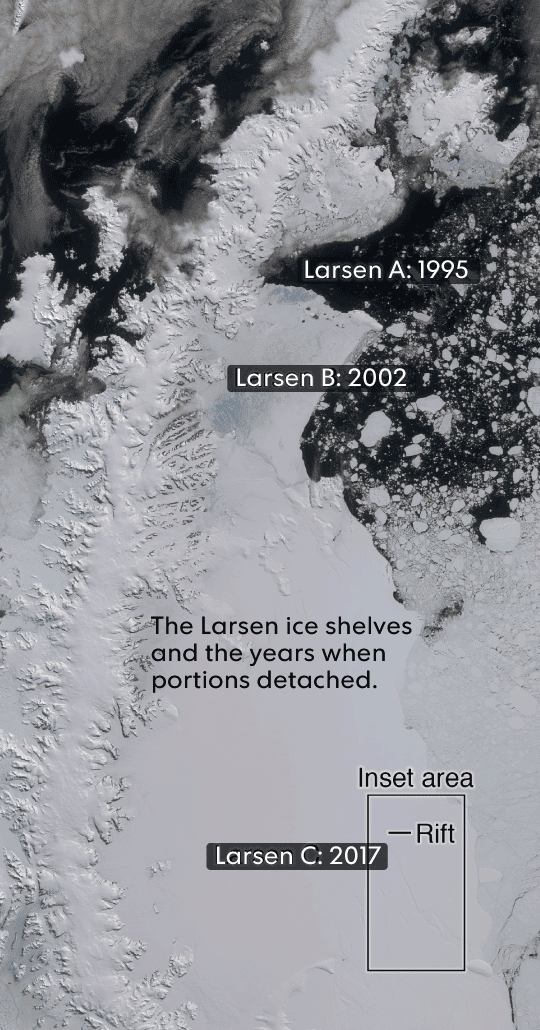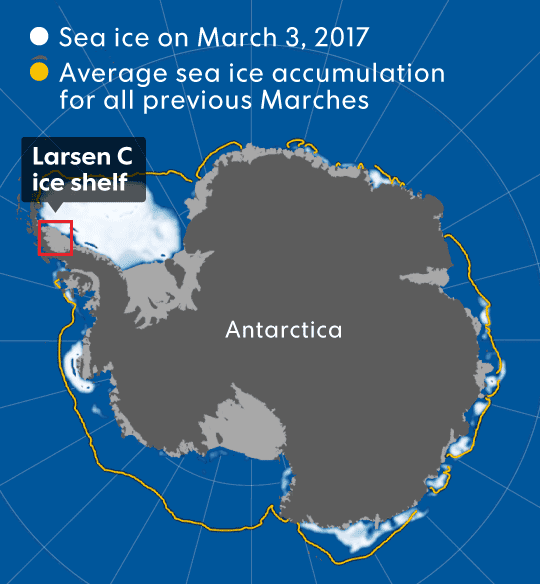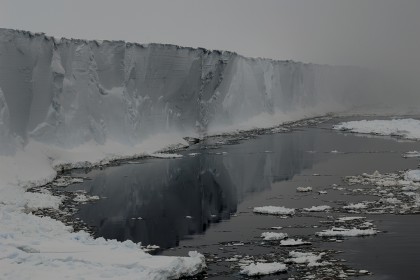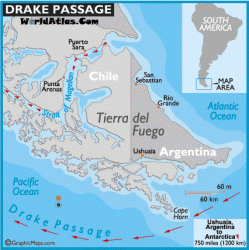BuckToothMoron
Gold Member
- Apr 3, 2016
- 9,895
- 1,898
- 290
It IS disconcerting that enough ice melted that such a huge piece of it broke loose.This means penguin immigrants to South America. I wonder how fast it will float. If the penguins go fishing, will they be able to find "home" when they return, or will it have floated away?
It WILL be interesting to know how long it takes to melt.
Read the article and the other links. You'll calm down when you discover this is a naturally occurring event that has been happening for 1000's of years. Feel better?
From which article did you find statements indicating the event is a "naturally occurring one that has been happening for 1000s of years?" Please copy and paste the statements you feel establish that fact.
The fact of the matter is that I did read the linked article from the OP. I also read the linked article entitled "Ice shelf to Antarctica iceberg." In that article I found the following:
Within that there is nothing providing a sound basis for one to infer that the calving of chucks of ice that in total exceed the size of Mexico has been going on for thousands of years.
- Larsen C is the third massive ice shelf that’s broken off from the Antarctic Peninsula during the past 22 years:

This year, sea ice around Antarctica was at its lowest level since scientists started continuously measuring it in 1979.

(Notice that sea ice is differently colored from ice shelf ice. Why? Because ice shelves, though they are floating, are attached to the land, whereas sea ice is not.)
On Feb. 13, in the midst of summer, Antarctic sea ice covered a total of 6.26 million square miles. That’s 790,000 square miles less than the average from 1981 to 2010 or equivalent to a chunk of ice larger than Mexico.
In that same article is found the following graphic.

What is reasonable to infer from that graphic is that it took thousands of years for one-third of a mile tall/deep Delaware-sized areas of ice to form the former Larsen C ice shelf. A quick check of Antarctic average total precipitation reveals that it's about 6.5 inches. Using nothing but arithmetic, one finds that amounts to 3200+ years of precipitation, and that is clearly an underestimation of the actual years it takes because the precipitation that falls is snow and ice is compacted snow, which means it takes longer than 3200 yeas for 1760 feet of ice to result from thousands of years of 6.5 inches of freshly fallen fluffy snow.
If that were so, perhaps your buddy, Weatherman, who also doesn't know what he's talking about, perhaps would not have written the following:Read the article and the other links. You'll calm down when you discover this is a naturally occurring event that has been happening for 1000's of years. Feel better?
That didn't take long at all.
I wrote "perhaps" because irrational, delusional and generally ignorant folks are as likely to say "A" as they are "the opposite of A."
More importantly, were that so, the source article might not report, "Ice shelves are permanent floating sheets of ice connected to a landmass, according to the National Snow and Ice Data Center." Clearly the are only as permanently attached as is the cold weather that inhibits ice melt.
Here is some comfort for you- I know you want this event to be further "evidence" (as if there is any) of AGW, BUT ITS NOT! You want a cited reference that calving is a natural process and has been going on for 1000's of years? Why don't you quote a source that says ice bergs are a new phenomenon created by AGW? Where do you think ice bergs come from? Honestly, some people have no common sense at all.
What Does the Antarctic Ice Shelf Break Really Mean?
We’ve been surprised by the level of interest in what may simply be a rare but natural occurrence. Because, despite the media and public fascination, the Larsen C rift and iceberg “calving” is not a warning of imminent sea level rise, and any link to climate change is far from straightforward. This event is, however, a spectacular episode in the recent history of Antarctica’s ice shelves, involving forces beyond the human scale, in a place where few of us have been, and one which will fundamentally change the geography of this region.











